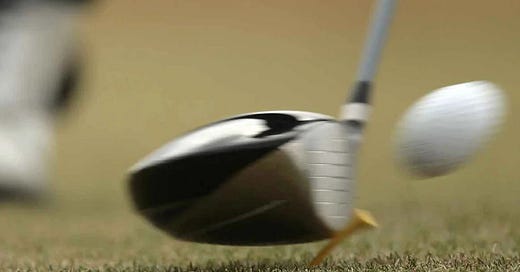If there is a golf aphrodisiac, it is distance. Assuming the direction is acceptable, the longer the ball stays in the air and the further it travels the more fascinated and delighted the golfer. Distance is often the motive for a new driver or trying a new ball.
If you want more distance, here are the critical factors:
· Contact. At impact the ball should be contacted by the center of the clubface, the clubface should be perpendicular to the target line at impact and the swing plane must be parallel to the target line. For most golfers this has the highest potential for more distance.
· Club Speed. This is a function of club weight and golfer physiology. As the club gets heavier it is swung slower. As a golfer increases strength and rotational flexibility they swing faster. More time in the gym.
· Ball Speed. Club speed indicates the potential speed available to the ball. Ball speed is the percentage of that speed imparted to the ball. Optimizing the contact optimizes that percentage.
· Trajectory. If you toss a ball too high, you cannot throw it as far. If you toss a ball too low, you cannot throw it as far. Given your physiology there is an optimal trajectory for maximizing your throwing distance. The same is true for golf. The trajectory is a function of clubface loft, shaft construction, and set up.
· Ball. Balls differ along several characteristics. But among those that offer the greatest distance (typically the least spin) and the shortest distance (often those with more spin), the difference in distance is less than 10 yards.
Bottom Line: Other than turning back the hands of time and getting younger or developing a steady regimen of strength and flexibility training, the most realistic way to improve distance with the equipment you have is to improve contact.
Each Thursday we’ll bring you a helpful insight.
Swing to the Target,
Ed
Learn from our YouTube Videos
Scroll down on this page to see previous insights
Have golf buddies? Share this article.





